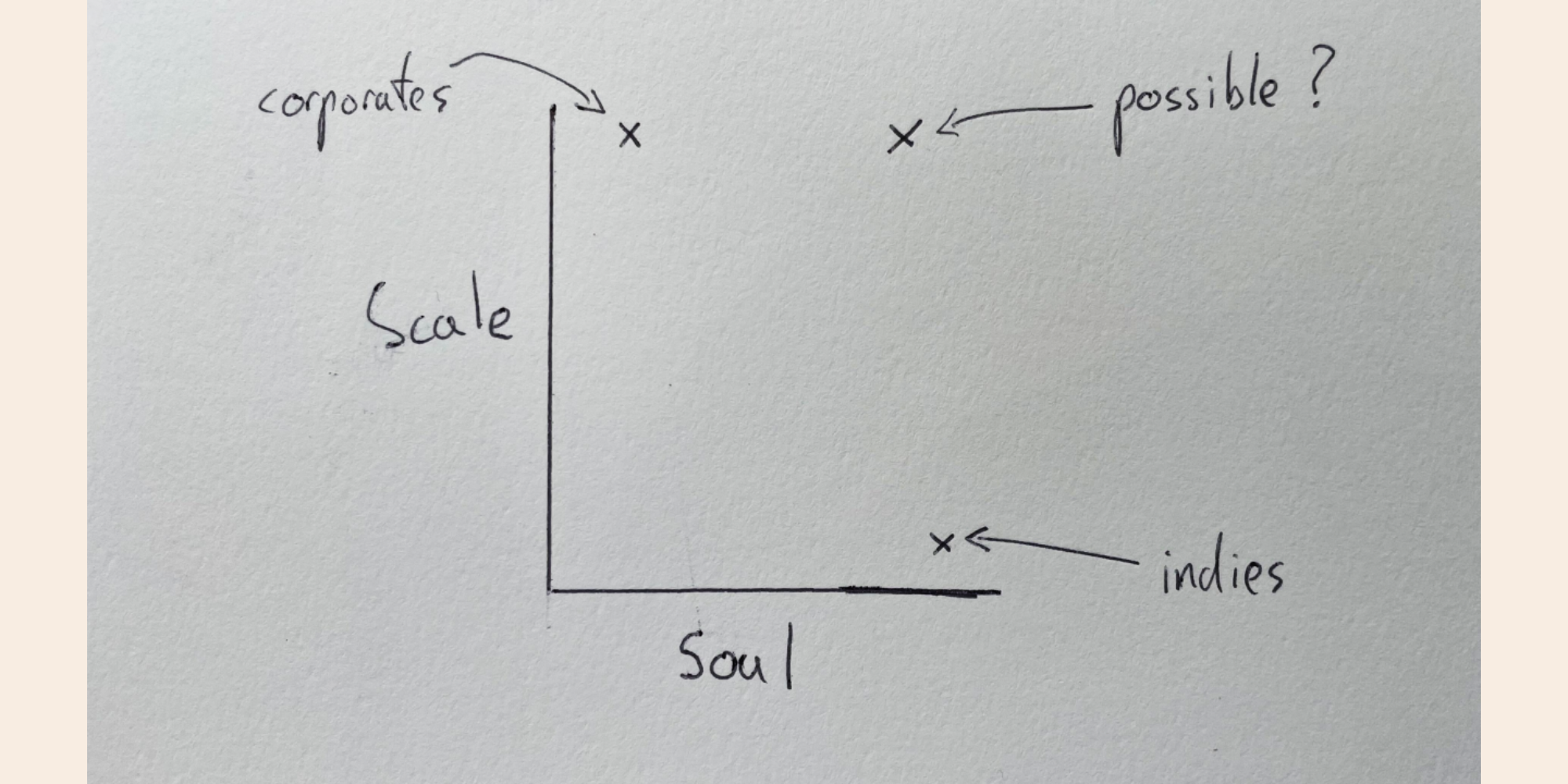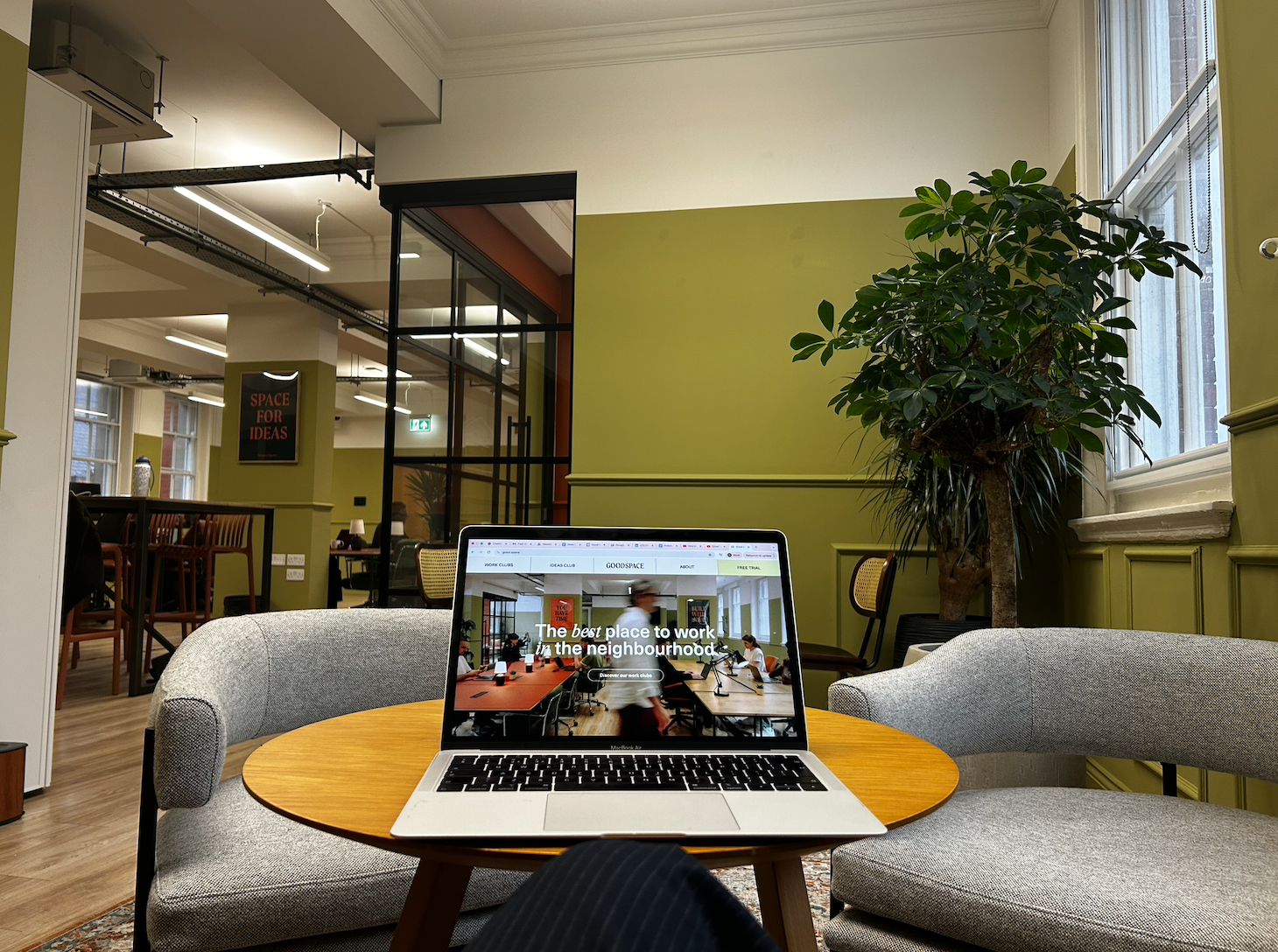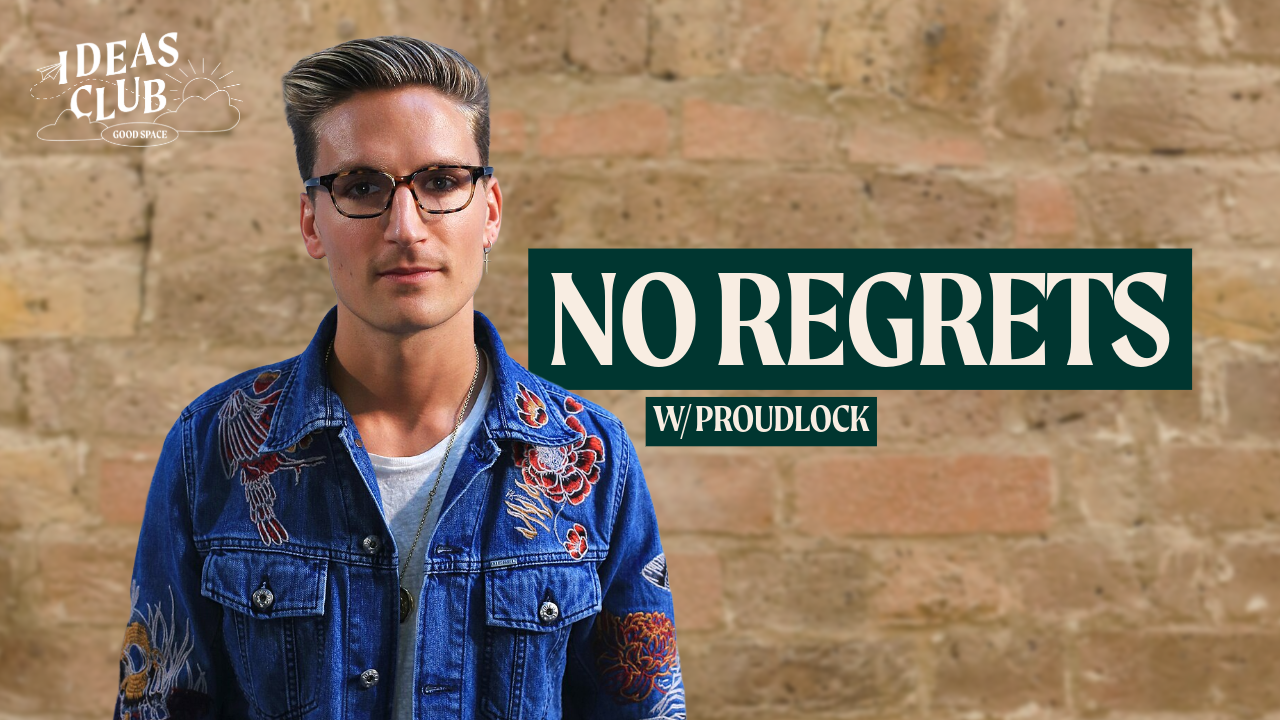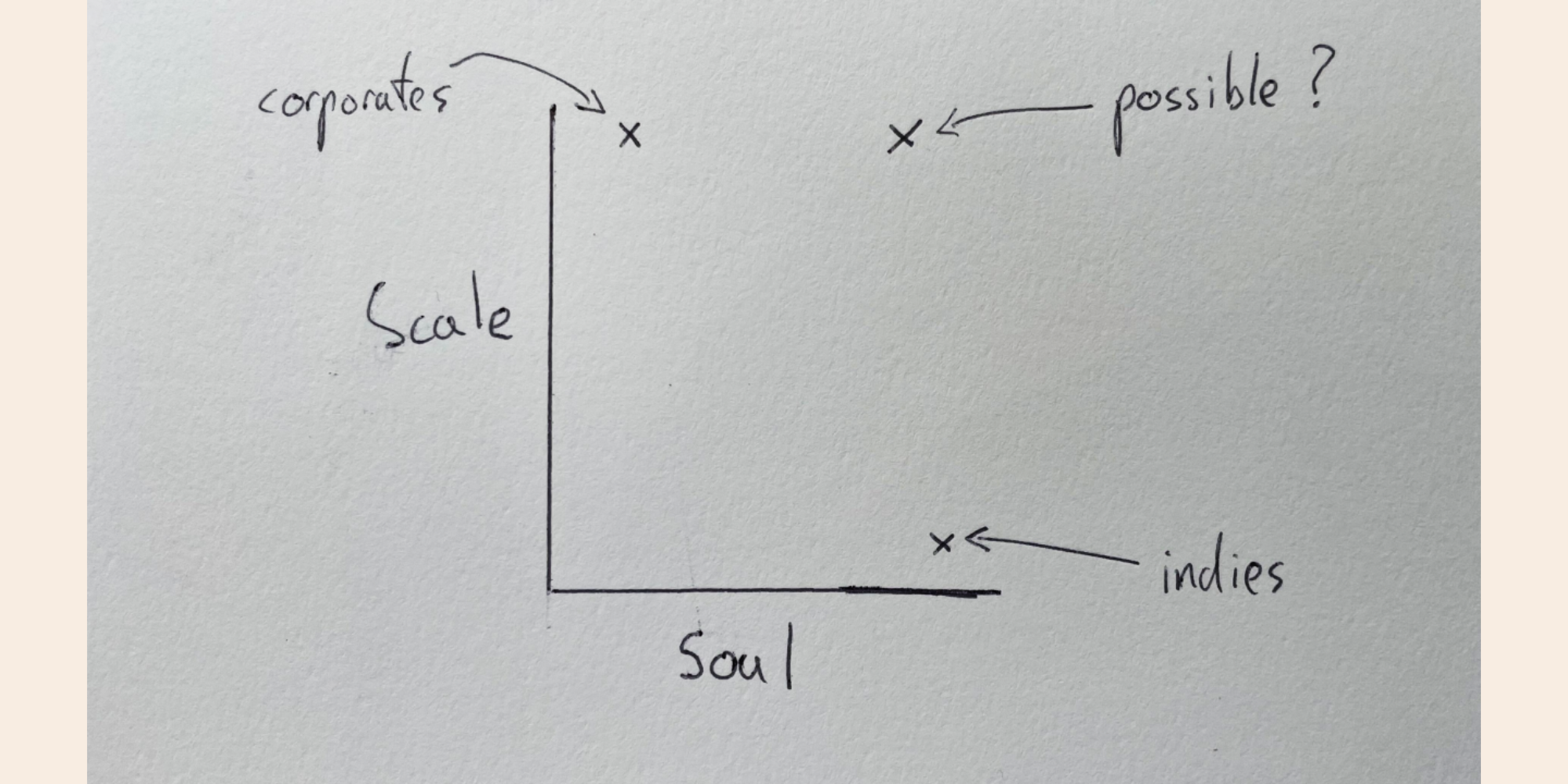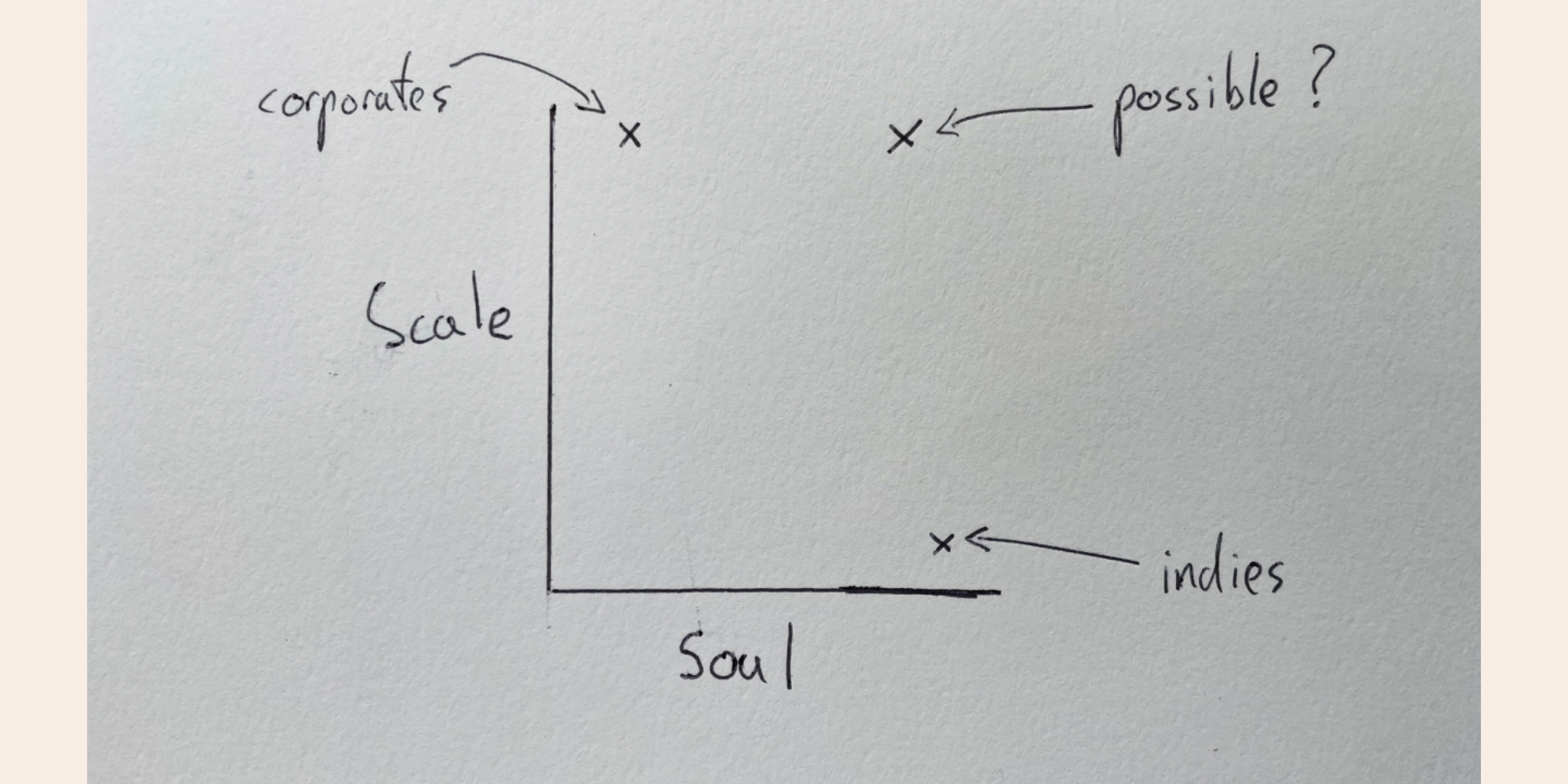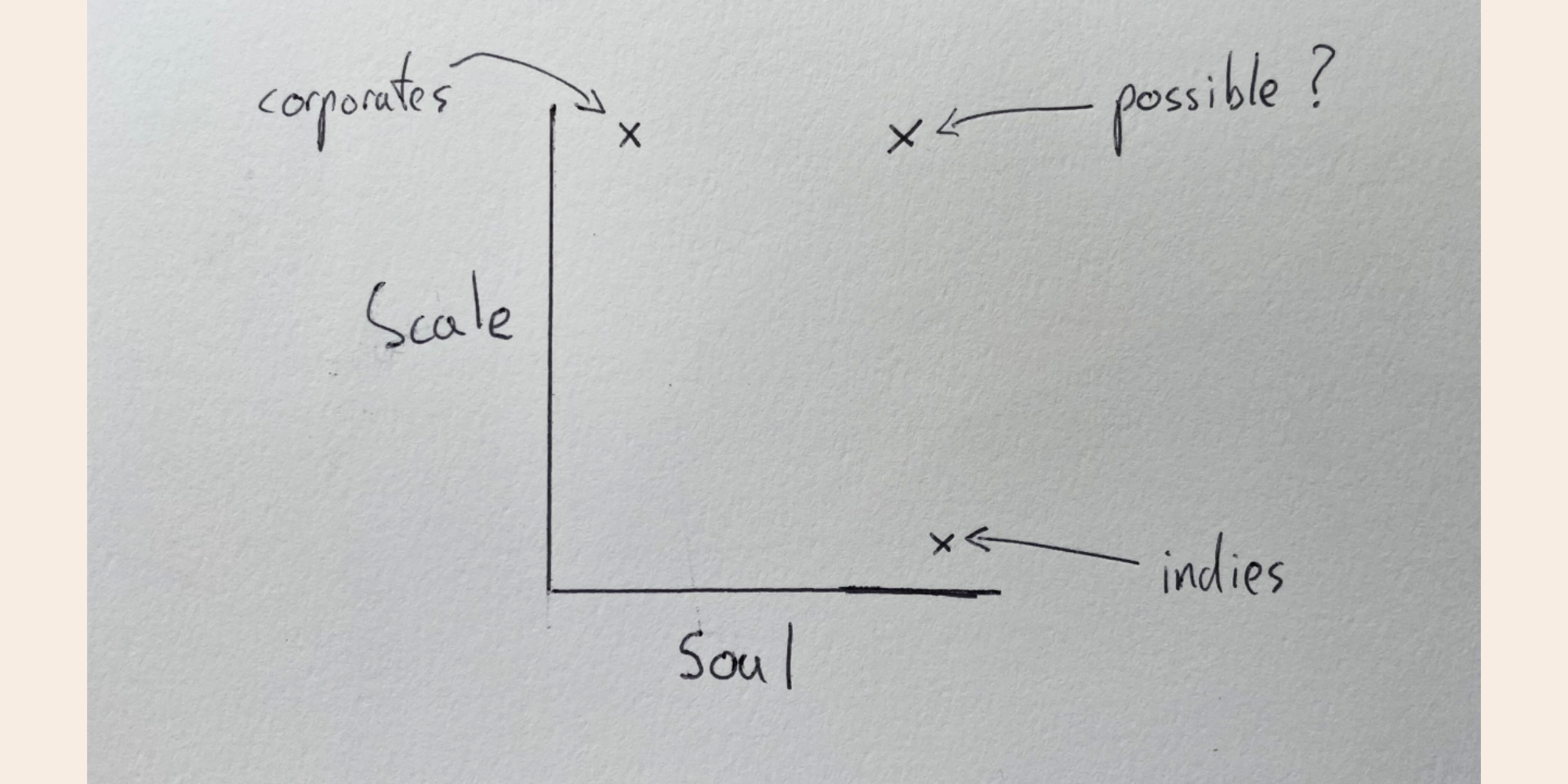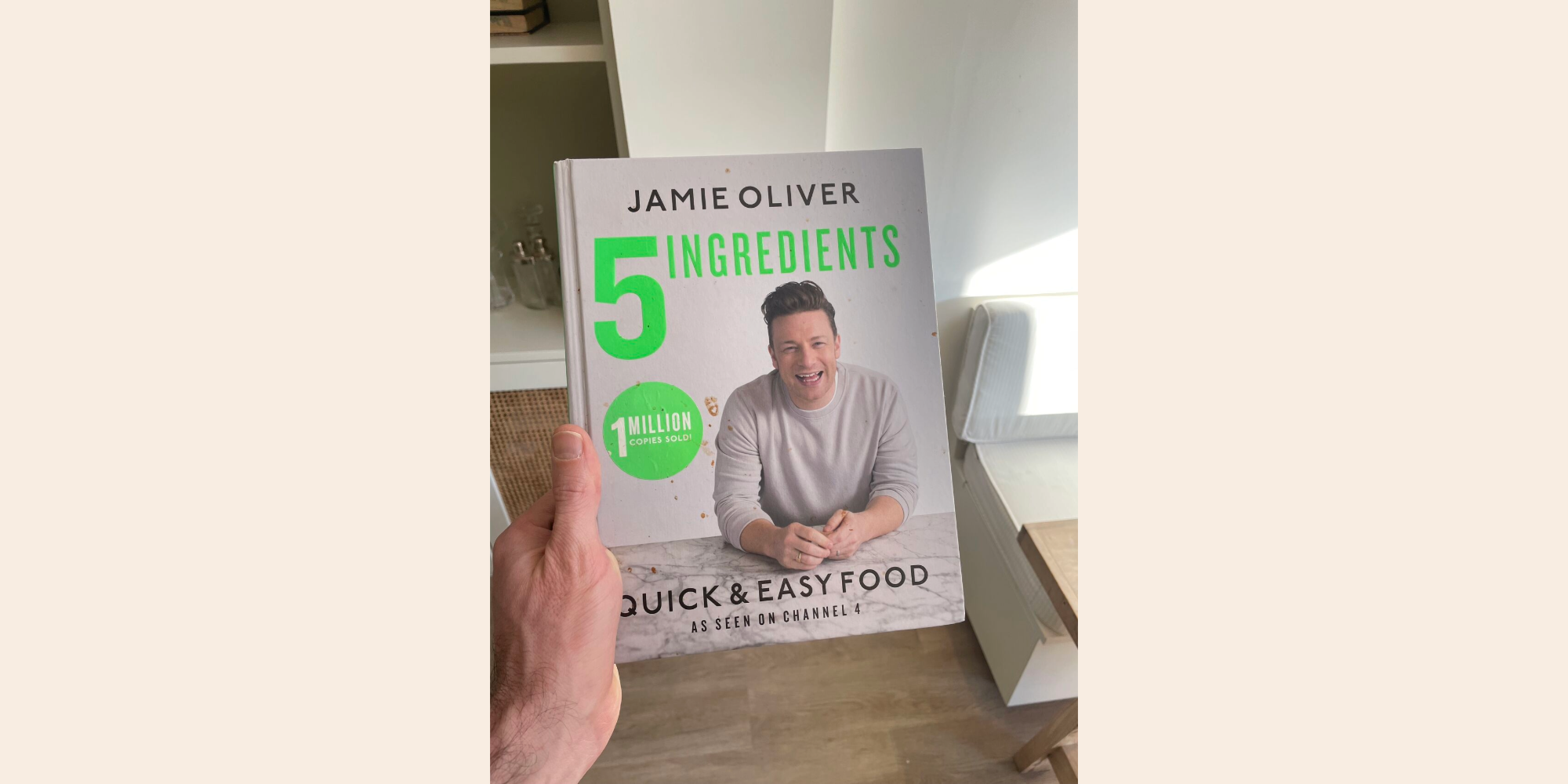This is the second in a four-part series of articles on ‘scaling with soul’.
Small, indie businesses often do well on the soul bit, but struggle to scale or deliver a curated experience. Larger businesses might quickly grow their footprint - but often end up feeling identikit and transactional.
So how do you hold these two conflicting goals of ‘scale’ and ‘soul’ in tension? It’s such a big question I suspect there is no point at which you arrive at the final answer. But I thought it would be interesting to share some of the things we’ve learned so far on the journey at Good Space.
Building systems that empower.
In the previous post I wrote about why we need systems and frameworks.
Now we’re going to look at how you go about building those frameworks. In a way that doesn’t feel restrictive, but releases the creativity of those on the front lines.
We’re going to look at how you actually apply the ‘freedom within a framework’ principle. Or at least, how we’re applying it at Good Space, and lessons learned.
When David Brown and I hear the term ‘standard operating procedure’ we instantly wince.
It suggests conformity, and all the worst traits of command and control. I picture Community Managers having to mindlessly follow a strict set of rules and procedures, rather than thinking on their feet and bringing their own ingenuity to the role.
This is part of the reason we had so little focus on systems initially.
But a lot of this resistance was born from confusing traffic lights and roundabouts.

That sounds odd. So let me explain…
Bear in mind I know very little about systems theory. But it’s because I’m such a systems rookie that I found this simple analogy from Aaron Dignan so helpful.
He explains that traffic lights and roundabouts are two different solutions (Operating Systems) to the same problem. Namely, the problem of needing cars not to crash but also needing to maximise throughput.
Traffic Lights
With this OS people need to be told exactly what to do and when to do it. There isn’t much trust. You follow a set of fixed rules which are dictated to you. This OS also requires centrally controlled apparatus (an electrical grid etc).
Roundabout
With this OS the responsibility is on you. You are responsible to each other and for each other. Roundabouts operate based on two simple constraints (known as ‘enabling constraints’):
- You have to go with the flow of traffic
- You have to give way to people already on the roundabout
That’s it. Simple.
It’s amazing to think how well roundabouts operate, purely on those enabling constraints.
I grew up near Swindon and so spent a lot of time navigating the famous Magic Roundabout (pictured below). It’s famed for having 5 separate roundabouts all connected around a central one. You’d think this would be mayhem, but there are hardly any collisions at all. I can tell you it’s bloody nerve racking to navigate though!

So let’s pit the two types of operating system against each other.
- Which is safer?
The roundabout. They tend to have 80% fewer collisions.
- Which can handle more traffic?
Again, the roundabout. About 80%-88% more traffic goes through per hour.
- Which is cheaper to maintain?
Yup - the roundabout is about £10k-£20k cheaper.
- But which one do we have 1000 times more of?
The traffic light.
So why on earth is this? Dignan suggests it might be because people feel safer with traffic lights, since they don't really trust other drivers. The roundabout also asks more of us. It asks us to show up differently.
The two operating systems are built on two different ideas:
Control and Compliance vs Trust and Autonomy
You can guess where this is going.
But before we get too excited it’s important to point out that there are situations where the traffic light (control and compliance) makes sense. This is where the ‘SOPs’ have a legitimate role. For example, for us, when people need to take time off they need to follow a strict traffic light system. Managing cover for a venue is not easy as there are numerous moving parts and people involved. Another example is maintaining core equipment such as our coffee machines. There’s a fixed timescale they need maintaining on, and there is no room for creative autonomy!
But this explanation of systems theory by Aaron Dignan was a big light bulb moment for us.
David and I used to resist systems because of previous soul-sucking experiences where people had built traffic lights in a situation that really needed a roundabout.
Building Our Own Magic Roundabout
Member experience was an area we desperately needed a system for. But we needed it to empower the venues teams and allow for them to bring their care and creativity to the role. When you are hosting people on a day to day basis, the last thing you need is a mindless checkbox procedure.
So we decided to build our own version of the Magic Roundabout. Namely in the form of a hospitality playbook. We call it the ‘Curated and Consistent Work Club Experience’.
The playbook covers every part of the member experience, including:
Ambience (music, lighting, heating, scent), Member Comms (online and offline), Community Building and Events, Health and Safety, Tidiness & Upkeep, Amenities (F&B, Library, etc.).
Here are the key principles:
Explain the Why & the Goal
Whenever we explain how we do something we explain the why and the goal of that system. If the venue team knows what the ultimate point is, they are then at liberty to tear up the rule book (or playbook in this case) in any given situation if they see fit. Just as long as they manage to achieve the same objective.
It’s also built on the bedrock of our values and constantly refers back to them.
It’s collaborative
All the venue teams can give input on the playbook. For example, if one venue manager is passionate about the onboarding experience they’ll have a heavy hand in crafting that, which will then be applied across all venues. Similarly if one person is a music nut, they’ll have a hand in crafting the Good Space Deep Focus Playlist, a resource all venues can use. David has a great mantra we operate on:
‘Everyone doesn’t need to obsess over every detail, but every detail does need to be obsessed over by someone.’
It’s worth also noting that we're allocating proper resources to ensure the playbook gets rolled out. And our Ops Manager has complete ownership of it as the most important part of her role. So it’s a living, breathing guide. Not something that just gathers dust in our Google folder.
Why call it ‘curated and consistent’?
I mentioned in the previous article why we realised we needed more systems. The TLDR is that Community Managers were having to reinvent the wheel every time they did something. Other than the energy expenditure and lack of focus on the core role, the venue would also be a reflection of both their strengths and weaknesses. This goes for any of us. I’m terrible with design. But what about when a member notice needs creating? I’d create it but it would look awful.
- To be curated, we need a clear point of view on every element of member experience.
- To be consistent, we need systems in place to actually deliver - over and over again.
Beyond the playbook
Wherever possible we try to apply the ‘trust and autonomy’ approach in everything we do. One of those areas is how we gather and meet as a team. ‘Death by meeting’ is more often than not a symptom of a lack of trust. So in the next article we’ll look at how to avoid pointless and bureaucratic meetings, at the same time as why it’s important to meet and connect.
An interesting challenge, especially for hybrid teams.
Jamie
#scalingwithsoul
